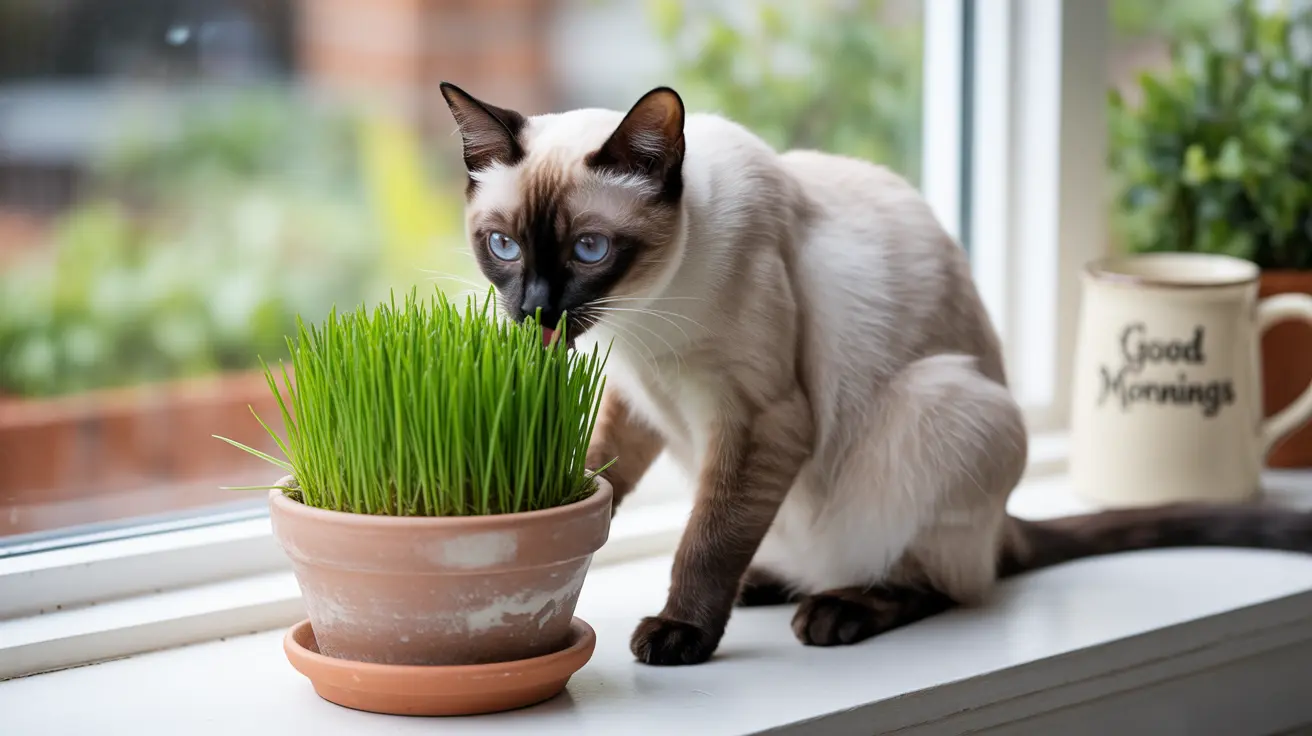Understanding Cat Grass and Its Benefits
Cat grass typically consists of wheat, oat, barley, or rye grass specially grown for feline consumption. Unlike regular lawn grass, these varieties are safe and nutritious for cats. Research shows that grass-eating behavior is natural for cats, with over 70% of felines regularly consuming grass in their environment.
The benefits of cat grass include:
- Digestive support through natural fiber
- Assistance with hairball management
- Source of essential vitamins and minerals
- Mental stimulation and enrichment
- Natural dental cleaning through chewing
Safe Feeding Guidelines for Cat Grass
When it comes to how much cat grass a cat should eat, moderation is key. Veterinarians recommend limiting cat grass consumption to no more than 10% of your cat's daily dietary intake. Most cats will naturally self-regulate their grass consumption, but some may need monitoring to prevent overconsumption.
A good starting point is to offer a small pot of cat grass and observe your pet's behavior. Some cats may nibble a few blades daily, while others might only show interest occasionally. The key is to let your cat set their own pace while watching for signs of excessive consumption.
Signs of Proper vs. Excessive Consumption
Healthy Consumption Signs:
- Occasional grazing
- Normal digestion
- Maintained appetite for regular food
- Active and playful behavior
Warning Signs of Overconsumption:
- Frequent vomiting
- Decreased appetite
- Lethargy
- Digestive disturbances
Tips for Growing and Offering Cat Grass
To ensure safe access to cat grass:
- Place grass in a stable container away from regular food
- Maintain clean, fresh growth by replacing every 2-3 weeks
- Keep the grass pesticide and chemical-free
- Monitor moisture levels to prevent mold growth
- Trim overgrown grass to maintain freshness
When to Consult a Veterinarian
While cat grass is generally safe, certain situations warrant professional attention. Contact your vet if you notice:
- Excessive vomiting after grass consumption
- Dramatic changes in grass-eating habits
- Signs of intestinal blockage
- Loss of appetite or unusual lethargy
Frequently Asked Questions
How much cat grass should I let my cat eat daily without causing digestive issues?
Most cats can safely consume a few blades of grass daily. Follow the 10% treat rule - cat grass should make up no more than 10% of their daily food intake. Monitor your cat's response and adjust accordingly.
Can eating too much cat grass make my cat vomit or have stomach problems?
Yes, overconsumption of cat grass can cause vomiting and digestive issues. While occasional vomiting after eating grass is normal, frequent episodes should be discussed with your veterinarian.
What types of cat grass are safest and most nutritious for indoor cats?
Wheat grass, oat grass, barley grass, and rye grass are the safest and most nutritious options. These varieties are specifically grown for cats and contain beneficial nutrients without harmful chemicals.
How can I introduce cat grass to my cat and monitor their intake safely?
Start with a small pot of grass in an accessible location. Monitor your cat's initial interaction and consumption patterns. Remove the grass if your cat shows signs of overconsumption or digestive issues.
Is cat grass a healthy supplement for my cat's diet or just a treat?
Cat grass serves as both a healthy supplement and a treat. While it provides beneficial nutrients and fiber, it should not replace any part of your cat's regular diet. Consider it an enriching supplement that supports natural behaviors and digestive health.
Remember, every cat is unique, and what works for one may not work for another. By paying attention to your cat's individual needs and responses, you can successfully incorporate cat grass into their routine while maintaining their health and happiness.






